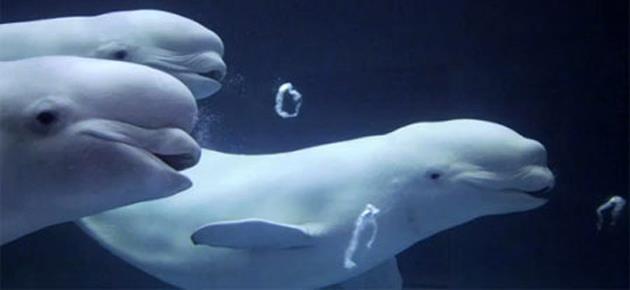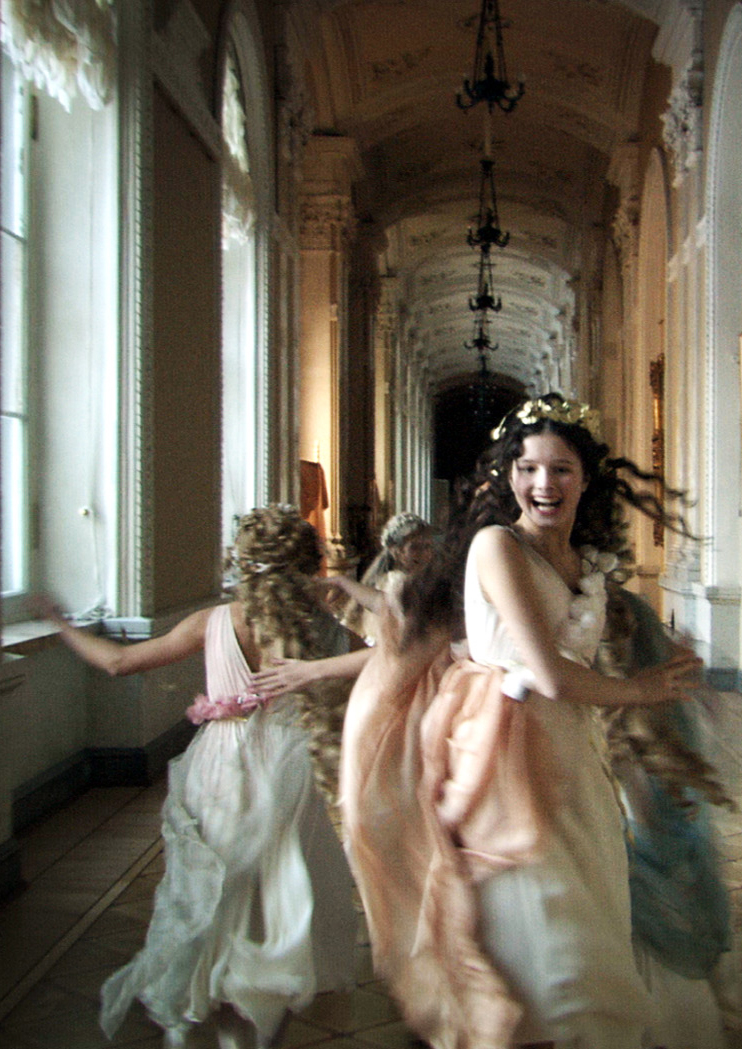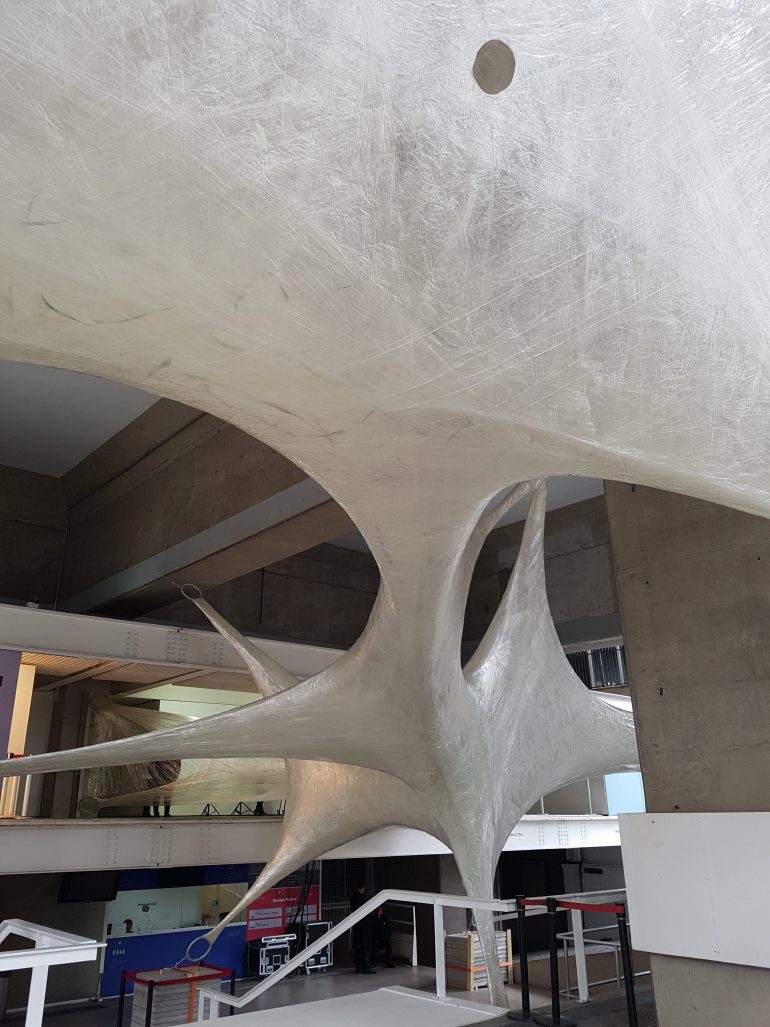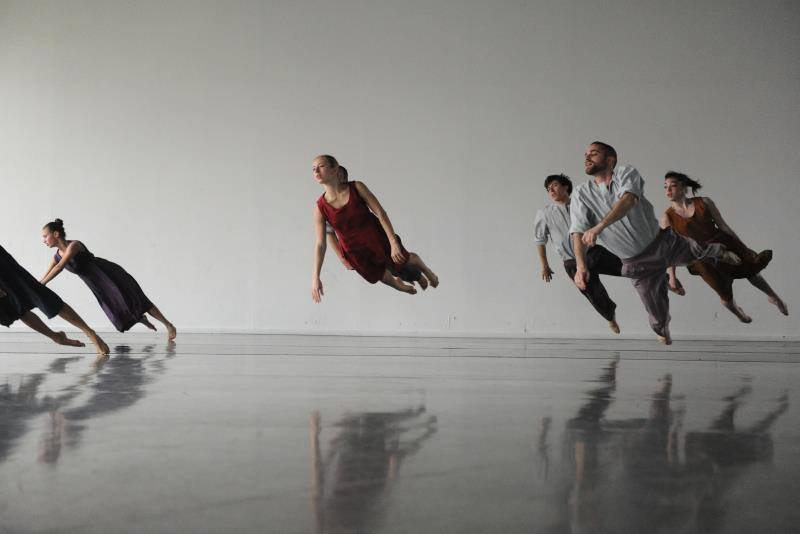


Aleksandr Sokurov
ألكسندر سوكوروف
亚历山大·索科洛夫
Александр Сокуров
Russian Ark
“Alexander Sokurov’s desire to film The Russian Arch in one continuous take required extraordinary technical solutions. Since it is physically impossible to shoot more than twelve minutes of conventional film, we had to shoot on video. However, it was only the relatively recent arrival of 24p high definition compact cameras that offered the visual quality and the ability to make this film for theaters, including transferring the digital image to a 35mm negative.With the help of German specialists a complex portable platform was designed to meet the demands of the scenario which included precise architectural plans, highlighting the distance of 1300 meters covered by the course of the action. It was decided that the only way to move the camera would be to use a steadycam, although we could not be sure until after the final image that such a long steadycam shot would be possible, given the physical performance. extreme demanded from the German cinematographer, Tilman Büttner. After months of rehearsals, the 867 actors and extras, the three “live” orchestras all had to know their position and precise roles “. It’s just amazing.
cinema full

numen / for use
tape sao paulo
file sao paulo 2016
Constant wrapping of pillars with a transparent adhesive tape results in a complex, amorphous surface through the process reminiscent of growing of organic forms. One line evolves into surface that forms an organic shape of extraordinary strength. The entrance of the audience inside the volume transforms the sculpture into architecture. It was practically “found” through the act of chaotic wrapping, where a one-dimensional line (“tape”) slowly turned into two-dimensional plane, which then finally curved into volume.

SQUAREPUSHER
Ufabulum
Soundcrash are proud to present the electronic music innovator that is Squarepusher! Beginning his sonic experiments in 1994, Squarepusher constantly strives to push the boundaries and limits of electronic music. In May 2012 Squarepusher unleashed his latest musical venture ‘Ufabulum’, an album of music generated purely from digital programming, ensuring his influence within today’s global music electronic scene is as vital as ever. For his first headline ‘Ufabulum’ album show in London, Squarepusher will take over the historic music hall Hackney Empire with his largest ever light-show to date! This is a unique opportunity to witness one of electronic music’s pioneers in an extraordinary setting.

Michael Hansmeyer
Subdivided Cube 4
At best, a computational approach enables architecture to be embedded with an extraordinary degree of information. Structure and surface can exhibit a hyper-resolution, with seemingly endless distinct formations. The processes can generate highly specific local conditions, while ensuring an overall coherency and continuity. As such, the resulting architecture does not lend itself to a visual reductionism. Rather, the procedures can devise truly surprising topographies and topologies, offering a thousand unique perspectives. Computational architecture can defy classification, it can evoke curiosity and elicit individual interpretations. The projects presented here forecast an exuberant architecture in which the exceptional supersedes the standard.

REVITAL COHEN & TUUR VAN BALEN
The Immortal
A number of life-support machines are connected to each other, circulating liquids and air in attempt to mimic a biological structure.
The Immortal investigates human dependence on electronics, the desire to make machines replicate organisms and our perception of anatomy as reflected by biomedical engineering.
A web of tubes and electric cords are interwoven in closed circuits through a Heart-Lung Machine, Dialysis Machine, an Infant Incubator, a Mechanical Ventilator and an Intraoperative Cell Salvage Machine. The organ replacement machines operate in orchestrated loops, keeping each other alive through circulation of electrical impulses, oxygen and artificial blood.
Salted water acts as blood replacement: throughout the artificial circulatory system minerals are added and filtered out again, the blood gets oxygenated via contact with the oxygen cycle, and an ECG device monitors the system’s heartbeat. As the fluid pumps around the room in a meditative pulse, the sound of mechanical breath and slow humming of motors resonates in the body through a comforting yet disquieting soundscape.Life support machines are extraordinary devices; computers designed to activate our bodies when anatomy fails, hidden away in hospital wards. Although they are designed as the ultimate utilitarian appliances, they are extremely meaningful and carry a complex social, cultural and ethical subtext. While life prolonging technologies are invented as emergency measures to combat or delay death, my interest lies in considering these devices as a human enhancement strategy.This work is a continuation of my investigation of the patient as a cyborg, questioning the relationship between medicine and techno- fantasies about mechanical bodies, hyper abilities and posthumanism.

superbien studio
siderea
We presented our interpretation of a gravitational anomaly, entitled Siderea, an unknown force at the outer fringes of the Universe, in the centre of the Great Attractor. Beyond anything our eyes or our minds are capable of imagining and using geometric and scientific coordinates to create a palpable world to scale, we wanted to tell a deeply immersive tale exploring the emotions that the discovery of such a stellar phenomenon might rouse. Freely inspired by the explorations and incredible advances made in astronomy, we transformed the venue into the point of observation of this extraordinary celestial body, in the literal sense of the term.

CORNELIA PARKER
كورنيليا باركر
科妮莉亚·帕克
קורנליה פרקר
コーネリア·パーカー
코넬리아 파커
Корнелии Паркер
two rooms
For some years Cornelia Parker’s work has been concerned with formalising things beyond our control, containing the volatile and making it into something that is quiet and contemplative like the ‘eye of the storm’. She is fascinated with processes in the world that mimic cartoon ‘deaths’ – steamrollering, shooting full of holes, falling from cliffs and explosions. Through a combination of visual and verbal allusions her work triggers cultural metaphors and personal associations, which allow the viewer to witness the transformation of the most ordinary objects into something compelling and extraordinary.

Robertina Sebjanic
Neotenous dark dwellers
Lygophilia
Lygophilia weaves together mythologies and sciences, history and future, fears and desires, continents, cultures, humans and non-humans. Lygophilia folds and unfolds the stories carried by those fascinating creatures that are the Mexican Axolotl and the Slovene Proteus.
From immortality to regenerative medicine — both animals are, as adults, in a state of “eternal youth” (neoteny) showing extraordinary longevity and regenerative abilities that put them at the centre of ancient myths as well as current cutting-edge scientific researches.

LECH MAJEWSKI
The Garden of Earthly Delights
Based on his own novel “Metaphysics”, Lech Wajewski’s film is an erotic treatise on art, love and death. When British art historian Claudine learns that her cancer is terminal, she abandons caution and takes her lover, Chris, on an extraordinary journey to Venice, where their passion finds fulfillment in the fantastic paintings of Hieronymus Bosch. Videotaping their trip, Claudine intends to leave Chris a haunting record of their emotional and spiritual discoveries.

Ingo Maurer
Birdie
The original Birdie suspension lamp was designed by Ingo Maurer himself in 2002. Birdie is the smaller version of the Birds Birds Birds chandelier and is suited for ceiling heights of 230 to 260 cm. With 12 halogen low-volt bulbs, extra produced by Ingo Maurer, and handmade wings of goose feathers this lustre becomes an extraordinary design lamp. The individual wires can be turned, bent and shaped whichever way you like.

NAOMI FILMER
Наоми Филмер
“The work I make focuses on ordinary parts of the body that we never really celebrate, but actually there is nothing ordinary about them at all, they are unique to every individual. By isolating them, and making a spectacle out of them, they are made extraordinary. I am interested in recognisable sounds like breathing – there is nothing more familiar than the sound of your own breath. If you capture those sounds, amplify and repeat them, they become unfamiliar.”

ERIK JOHANSSON
إريك جوهانسون
에릭 요한슨
אריק ג’והנסון
エリックヨハンソン
Arms break, vases don’t
Erik Johannson is a self-taught photograher who learned how to retouch photos to make impossible and extraordinary images. Growing up with a grandmother who painted and a penchant for escaping into the other worlds of video games, he naturally blended the two into a technique using computers to generate images that couldn’t be captured by a camera.

Batsheva Dance Company
Tabula Rasa
Ohad Naharin
Arvo Pärt: Tabula Rasa
photo Gadi Dagon
Hailed as one of the world’s preeminent contemporary choreographers, Ohad Naharin assumed the role of Artistic Director in 1990, and propelled the company into a new era with his adventurous curatorial vision and distinctive choreographic voice. Naharin is also the originator of the innovative movement language, Gaga, which has enriched his extraordinary movement invention, revolutionized the company’s training, and emerged as a growing international force in the larger field of movement practices for both dancers and non-dancers.

XAVIER LE ROY
Self Unfinished
French choreographer Xavier Le Roy defies categorisation as a dance-maker, drawing on diverse influences from the worlds of science, performance art and contemporary dance.
In Self Unfinished (1998), Le Roy takes the audience on a journey of metamorphosis as he transforms into an extraordinary hybrid creature part machine, part alien, part human.
Employing all manner of physical devices, Le Roy creates a world of illusion that is as unsettling as it is transfixing.

RUDOLF NUREYEV
Pierrot Lunaire
In his desire to expand his art to other forms of dance, Rudolf Nureyev performed this choreography by Glen Tetley many times and in many countries, and included it in the repertoire of his “Nureyev and Friends”.
He identified with this tragic character as with Fokine’s Petrouchka, another of his favourite roles. Glen Tetley resisted during five years before giving him this choreography, fearing that the intense personality of the dancer would overwhelm the innocence of Pierrot, but Rudolf revealed a deep vulnerability in this role. While he was rehearsing Pierrot lunaire with Tetley, he was being filmed in Valentino, and had started to choreograph his version of Romeo and Juliet. It is just an example of the extraordinary density and variety of his schedules. Martine Kahane

ANTTI LOVAG
Palais Bulles
Bulles was commissioned by a wealthy French businessman, a great admirer of the Hungarian architect. In this first time, the “bubbles house” was used as a beach house, a family holiday in front of the blue of the Mediterranean. The second owner of Palais Bulles was the famous French fashion designer Pierre Cardin. From 1991, Cardin spent his holidays there and organized extraordinary parties. Palais Bulles represented, for the fashion designer, the female body. Everything, he said, from floor to ceiling, from external to internal space, has spherical shapes. The entire space is invaded by the sensuality of round shapes.